
In the summer of 2015, when I was 21 years old, I found myself working at one of America’s most notorious jails.
I was interning for McKinsey & Company, the elite management consulting firm. We had been tasked with helping reduce violence at Rikers Island, New York City’s main jail complex. Multiple members of the team had seen combat in Iraq and Afghanistan. I was the youngest by a few years.
When I arrived, McKinsey had been embedded at Rikers for nine months. Corruption, violence, and a reliance on torturous solitary confinement plagued the jail. One day, around a dozen of us met in a conference room to discuss the highest-profile recent victim of the inhumanity at Rikers: Kalief Browder. Browder had been held at Rikers for three years for allegedly stealing a backpack when he was 16. He spent roughly two years in solitary confinement and attempted suicide multiple times. Browder never went to trial and was eventually released.
We watched surveillance-camera footage of Browder that had recently been published by The New Yorker. In one video, Browder, who is in handcuffs, is thrown to the ground by a guard; in another, he is brutalized by around 10 other incarcerated teenagers as guards neglect to control the situation.
I probably had the most radical views of any of the 18 or so McKinsey staff then on the project. In college, I had cofounded a student group dedicated to prison reform. I’d fancied myself a leftist firebrand who might help inject some humanity into how Rikers was run.
I had spent only a few weeks working for “the other side,” but after seeing the footage of the teenagers assaulting Browder, I was ready to “crack some skulls” and said as much to my team. (The guard assaulting Browder angered me, but—good management consultant that I was— I’d determined that beating up the teens would be the most efficient way to end the overall violence.)
A senior partner in the room who came by only occasionally was taken aback by how much we had internalized Rikers’s culture of brutality and accused us of having “gone native.” One reason for this might have been that, although we interviewed dozens of Rikers staffers (some of whom I remember referring to mealtimes at the jail as “feedings”), not once, to my recollection, did we talk to a single incarcerated person.
Soon after I started at Rikers, Browder hanged himself. He was 22, just a year older than I was.
Despite all of McKinsey’s supposed efforts, the use of force by guards at Rikers has only increased since 2016, reaching what a federal monitor called an “all-time high” in 2020. In 2021, slashings and stabbings were up more than 1,000 percent from 2011. In 2019, ProPublica found that McKinsey had “rigged” its violence-reduction numbers. (McKinsey denied this.) And in May 2022, New York City stopped using McKinsey’s system for classifying detainees. In the end, the city spent $27.5 million on McKinsey’s services, with precious little to show for it. McKinsey, on the other hand, collected its money and moved right along.
Founded in 1926, McKinsey is still widely considered the most prestigious consulting firm in the field. It reported more than $15 billion in revenue in 2022 and employs 45,000-plus people in 133 offices around the globe. McKinsey says it’s served more than 3,000 clients, including nearly every one of the world’s 100 largest corporations.
What does McKinsey do? Generally, it deploys teams of sleep-deprived, overeducated young people to solve tough problems for organizations—typically for-profit businesses, though the firm also serves many governments and large nonprofit organizations. If you’re a CEO who wants help evaluating whether to enter a new market or lay off thousands of employees, you might hire McKinsey.
McKinsey made the prescient decision to avoid credit for its work, keeping its client and project lists secret. In practice, this has insulated the company from the disasters it was party to, such as the collapse of Enron. (This secrecy also serves to deter nearly all current and former McKinsey employees from speaking to reporters, meaning that, despite my best efforts, some of the details in this piece are based solely upon my own recollections.)
Popular
“swipe left below to view more authors”Swipe →McKinsey’s recruiting materials offer you the chance to “Change the world. Improve lives.” Naïve as it seems in hindsight, I came to McKinsey believing those words. But after a year and a half there, I eventually understood that not only does McKinsey fail to make the world better—it often colludes with those who make the world worse.

The Rikers project was what ultimately convinced me to intern with McKinsey. The prospect of getting to directly influence reforms at a major jail was thrilling. Working in government—for much less pay and prestige—sounded stultifying. By contrast, McKinsey’s pitch seemed like a dream come true.
That pitch goes something like this: You may think that you can’t have it all—that a career dedicated to the social good requires giving up some money and status. But McKinsey says you can. You’ll make less than a banker and work more than a software engineer, but you’ll be respected, collaborate with brilliant people, cash a fat paycheck, and still get to do good.
To convince idealistic(ish) candidates, McKinsey exaggerates how much of its work benefits society. At the time I applied, two of the four practice case studies on McKinsey’s website involved governments or nonprofits, but during training, I remember being told that only about 10 percent of the firm’s work was in those sectors.
McKinsey leaves nothing to chance when making the hard sell. All the “offerees” are flown to their would-be office for a “celebration weekend.” You’re put up in a fancy hotel and wooed by existing consultants. On Friday night, the participants take over a fancy restaurant. The food is excellent, and the bar is open.
More From This Issue
I went to the Philadelphia office, which had a tradition in which employees roast their colleagues with limericks. (Sample lines: “And now they’ve set their wedding date, / All because the period was late.”) Each new recruit was given a mini bottle of champagne upon accepting their offer. I think I was the last to accept mine, which I did via—you guessed it—a limerick.
My summer at Rikers was difficult. I struggled with the content and the quantity of the work, as well as the crushing reality of attempting to fix a systemically fucked institution by making marginal changes.
At the end of the standard 10-week internship, McKinsey wasn’t sure about me. I was given the unusual choice to extend my internship for two weeks or return to college without a full-time offer. I bailed on a planned family vacation and took the extension, joining a different team at Rikers. Each day, we met at 5:30 am and ordered takeout breakfast at Nick’s Gourmet Deli in Queens, a few blocks from the three-lane bridge to Rikers. We were trying to develop plans for a “model facility” at the George R. Vierno Center, one of the 10 jails on the island.
I had spent most of the previous 10 weeks working with members of Rikers’s administrative staff at the Department of Corrections headquarters. Now I worked “behind the gate.” Each morning, I removed my belt and sent my laptop bag and breakfast through an X-ray machine before proceeding to our team room, a dim, cramped office. The two associates on my team were both ex-Marines. (One went on to work in a senior role for Arkansas Republican Senator Tom Cotton.)
My memory of the content of my work during this period is a bit hazy because of the sleep deprivation and stress, but my willingness to show up before dawn was likely the decisive factor in securing my offer of a full-time job. For all the effort McKinsey seems to put into finding the “smartest” people, one’s capacity to suffer and to sustain inhuman hours is probably a better predictor of success than one’s intelligence.
I thought it was ironic that I came into the internship as a borderline prison abolitionist and ended it by receiving a job offer in a warden’s conference room. But by the end of that summer, I had grown to like many of the people running Rikers, bonding with the jail’s most senior uniformed officer over our mutual love of Led Zeppelin. It was an early lesson that interpersonal kindness is not the same as actual goodness.
I also liked and respected my McKinsey colleagues and felt I had learned a lot. What’s more, I sensed an opportunity around the corner. McKinsey has extremely high expectations for its consultants: that they should work 60-plus hours every week, make zero mistakes, and always remain poised in front of clients. But if you stick it out for two years, you’ll be ushered into a world with even more money, prestige, and power—either through the lucrative “exit opportunities” that McKinsey provides or through the equally plush jobs within the company itself.
I finished my senior year, and in September 2016, I started full-time at McKinsey. With a year of distance from the pressures of the internship, returning felt good.
There was a strong drinking culture at the Philly office. Friday evening’s “wine time” bled into happy hours at nearby bars, dinners out, and late-night dancing. One colleague quipped that at McKinsey, “alcoholism was overrepresented and under-discussed.”
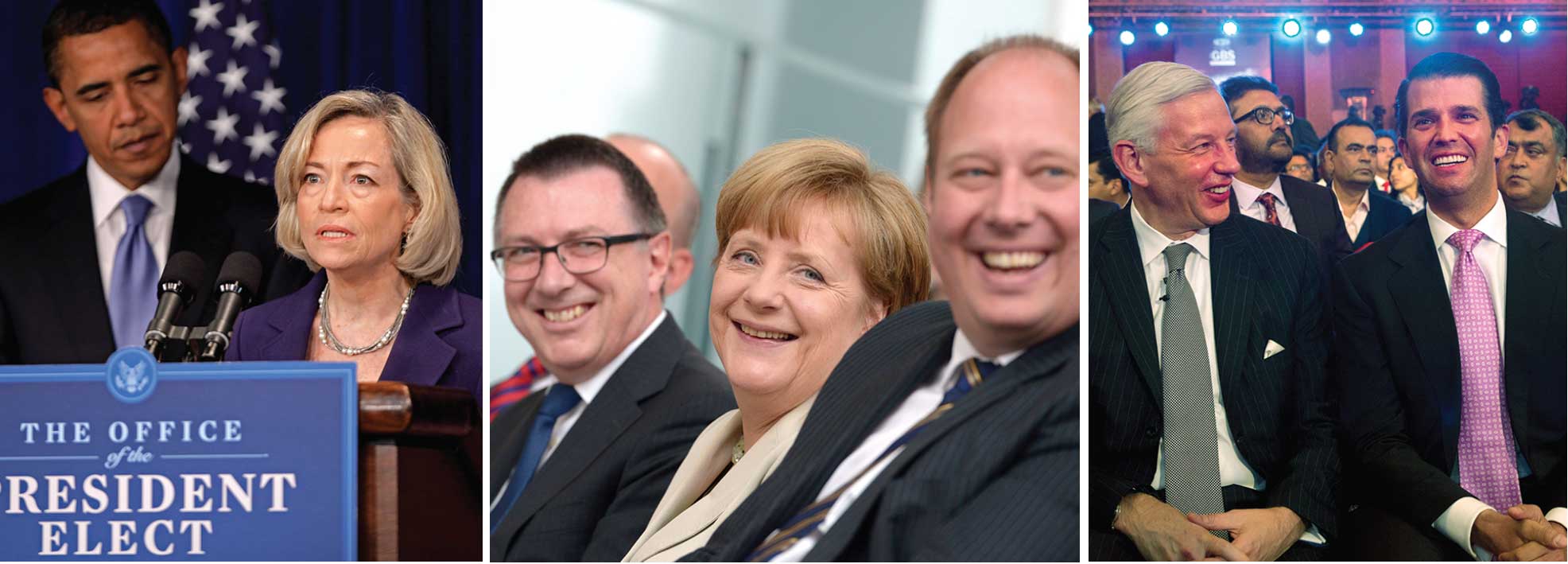
The day after Donald Trump’s 2016 election victory, I was working for a client out of McKinsey’s D.C. office. The vibe there was shockingly normal, but I felt like the world was ending and that I was the only one who knew or cared.
In January 2017, I was offered a project with a federal agency I knew little about: Immigration and Customs Enforcement. I’d be working on “talent management” with the human resources team at ICE’s Washington headquarters.
This was in the final days of Barack Obama’s administration, and ICE was not yet a household name. Obama had done a good job of convincing young lefties like me that his administration was humane. (In reality, Obama deported more people in his first three years than Trump did over the same period of his term.) Even though Trump had put anti-immigrant politics at the heart of his campaign, the fact that I was about to work for his administration’s immigration enforcement agency didn’t really register. I didn’t like what I had learned about ICE during the single weekend I was given to decide whether to join the project, but I figured it would be an opportunity to see how a federal agency operates.
Working at ICE headquarters was surreal. We were functionally the equivalent of full-time ICE employees—we even had ICE e-mail addresses—but there were limits. I didn’t have the security clearance to walk the halls alone, so a vetted McKinsey colleague would escort me to our team room. As with the contract at Rikers, my four-person team was supposedly managing an “organizational transformation.” The goals we were given included “Arrest more people with available resources” and “Remove people faster.” Such blunt language should have been a red flag, but I told myself that ICE would only be deporting people with serious criminal records—an Obama-era policy that didn’t thrill me but was one that I could live with.
Then Trump decided to target nearly all undocumented immigrants for deportation and directed ICE to hire 10,000 additional deportation officers, which would have nearly tripled existing staffing levels. Though none of this was at odds with the “remove people faster” directive, the intensity of the push unsettled us. Many of the team members had attended the Women’s March, which I had found reassuring. The fact that people who had marched against Trump proceeded to embed themselves in the agency at the center of his agenda is, in a sense, all you need to know.
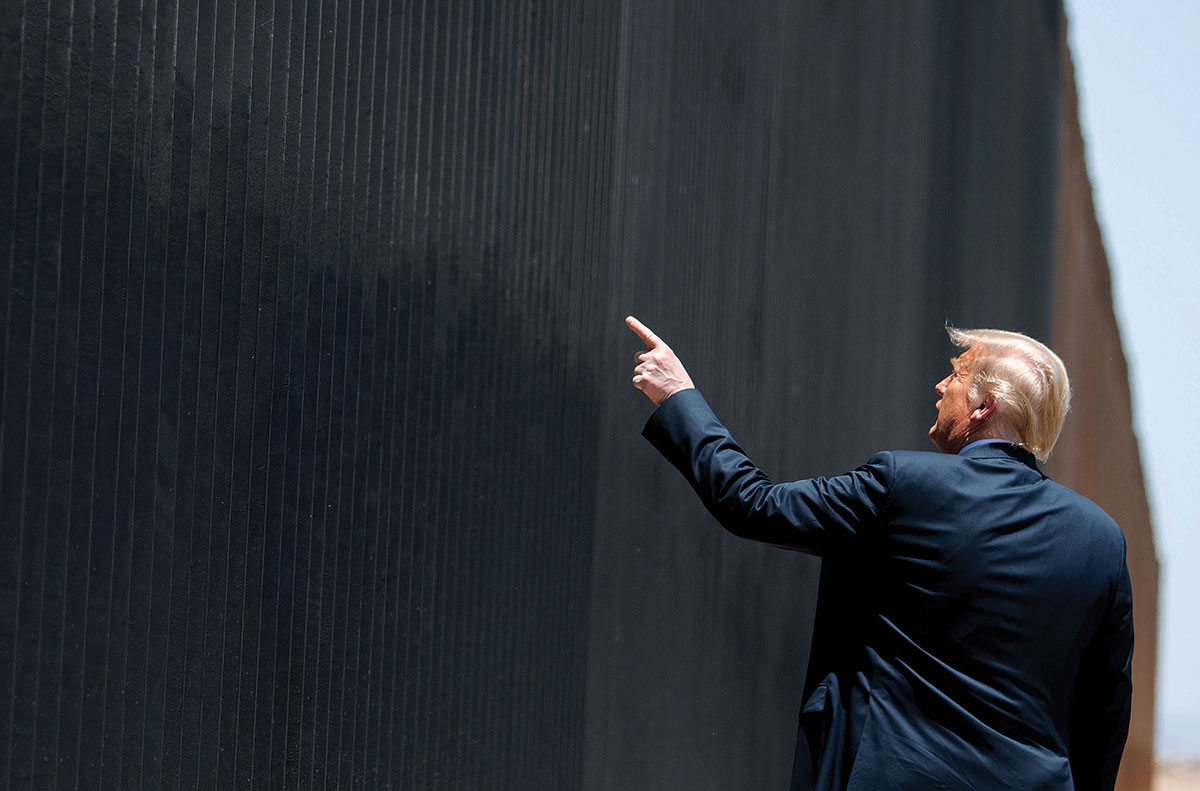
It didn’t take long for me and many of my colleagues to start freaking out. During meals and Uber rides, I vented my fears and objections to the work, which were largely echoed by my peers. Had we not been the type of people to jump through every hoop on the path to conventional success, a mutiny might have been brewing. Instead, we had a conference call.
One February morning, the roughly 15 of us working on the team got on the phone with Richard Elder, then a senior partner managing the relationship with ICE. He compared our work for ICE to previous projects implementing Obamacare, which he said many McKinsey employees objected to but worked on nevertheless.
“The firm does execution, not policy,” Elder said. This was a common refrain at McKinsey. At Rikers, I had asked my team about the possibility of eliminating cash bail, which would have reduced the number of people passing through the jail at the time by roughly 45,000, or well over half, and was told that ideas like this were “out of scope” because the firm “doesn’t do policy.”
If we just do execution, I asked, what would have stopped us from helping Nazis more efficiently procure barbed wire for their concentration camps? In response, I recall Elder muttering about McKinsey being a values-based organization. (Elder has not responded to requests for comment.)
McKinsey does indeed tout its values. As a McKinsey spokesperson emphasized in response to questions for this article, many offices hold an entire “Values Day” each year. But when I was there, none of these values addressed McKinsey’s role in, and effect on, the world. They focused instead on doing right by your clients and colleagues. (The firm’s stated purpose is now “to help create positive, enduring change in the world,” but I never heard this language used to justify our work.) Elder’s comments contributed to my growing feeling that McKinsey was an amoral institution willing to do almost anything for almost anyone who will pay them.
My job was to model how to hire enough new ICE agents to comply with Trump’s executive order. I was terrified of what would happen if the agency actually hired 10,000 new deportation officers. I recall there being a consensus that ICE agents were already the least competent and least respected federal law enforcement officers. How much worse would things get if ICE had to lower its hiring bar further? And what kind of people would want to join an agency that Trump had made the focal point of his white nationalist administration?
I raised these concerns on my team, and one of the partners bristled, saying that his cousin was a Border Patrol agent and a good guy, not some retrograde caveman.
I would often spend my nights reading about the impacts of ICE, like the story about a man who killed himself after being deported six times, or the one about a longtime resident torn from his community. I lay awake in a suite in the D.C. Park Hyatt that I could never afford on my own. My work no longer seemed innocuous; it felt instead like I was laying the groundwork for a humanitarian disaster.
One day as I was leaving ICE headquarters, I saw that a small protest had formed outside the building. I ducked out a side exit, terrified of being spotted by the activists, who could have been my comrades if I’d made different choices. One of McKinsey’s more-touted values asked us to uphold the “obligation to dissent.” (“The obligation to dissent has long been one of McKinsey’s core values alongside those focused on client service and talent development,” the McKinsey spokesperson told me.) But I came to feel that McKinsey is structured to resist any type of dissent. Aside from speaking up in a meeting, asking to leave the project, or complaining to an ombudsman that McKinsey’s own code of conduct says “cannot take action to address any questions or concerns you may have” except in exceptional circumstances, there was no way to meaningfully push back. And besides, I couldn’t point to any violations of McKinsey’s values at ICE, because there weren’t any.
I remember venting about the ICE work to a partner who wasn’t on the project. He encouraged me to sabotage things from within. At first I thought he was joking, but he—an immigrant himself—seemed serious.
I considered leaking information to a newspaper. But the early weeks of the Trump administration were plagued with so many scandals that nothing I could share seemed like it would make a difference. If I left the project early, I would be replaced by someone who likely would have fewer objections to the work. I decided that the best I could do was adamantly push ICE to adopt the longest possible hiring timeline and to ignore attrition when it set hiring targets.
My team included people like a former diplomat and a West Pointer who identified as a staunch Democrat. I liked these colleagues more than the members of any other team I worked on. But they were apparently more sanguine about the work—as evidenced by the fact that all of them are still at McKinsey.
I learned to hide behind spreadsheets and slide decks. I spent the remaining weeks on the ICE project building hiring models I hoped would never become reality. (Trump never got the money needed for the plans, though ICE didn’t need to expand to conduct atrocities.)
During my final week at ICE, my project manager informed me that the partner there wanted to extend my time. My manager told him that “this project is killing Garrison” and recommended to him that I not stay on, out of concern for my mental health. If an extension had been offered, I think I might have agreed to it, because I felt obligated to advocate the least harmful hiring options to ICE leadership, even though my manager was right: The work was sending me into a deep depression.
I was disturbed to learn how much worse McKinsey’s contributions became after I left. Reporting from ProPublica and The New York Times found that the firm helped increase arrests and speed up deportations. Some of its advice was so extreme that it made even ICE staff uncomfortable. (McKinsey called the reporting false, though ProPublica said the firm provided next to no evidence to back this up.)
After participating in three banal projects in the private sector, I was advised to give notice. Honestly, it came as a huge relief. My exit came sooner than it did for most—McKinsey and I clearly weren’t a good match—but turnover was so common that it brought no real shame.
In December 2018, I met some of my former colleagues for dinner in New York. One of them had landed his “dream job” and signed a lease for a ridiculously expensive apartment. When the talk turned to politics, I remember him drunkenly proclaiming, “All I know is my life is amazing, and I want nothing to change.” People chastised him, but I appreciated the honesty—I couldn’t help but notice that everyone else at the table who postured as a progressive had gone on to work at a private equity firm or a hedge fund.
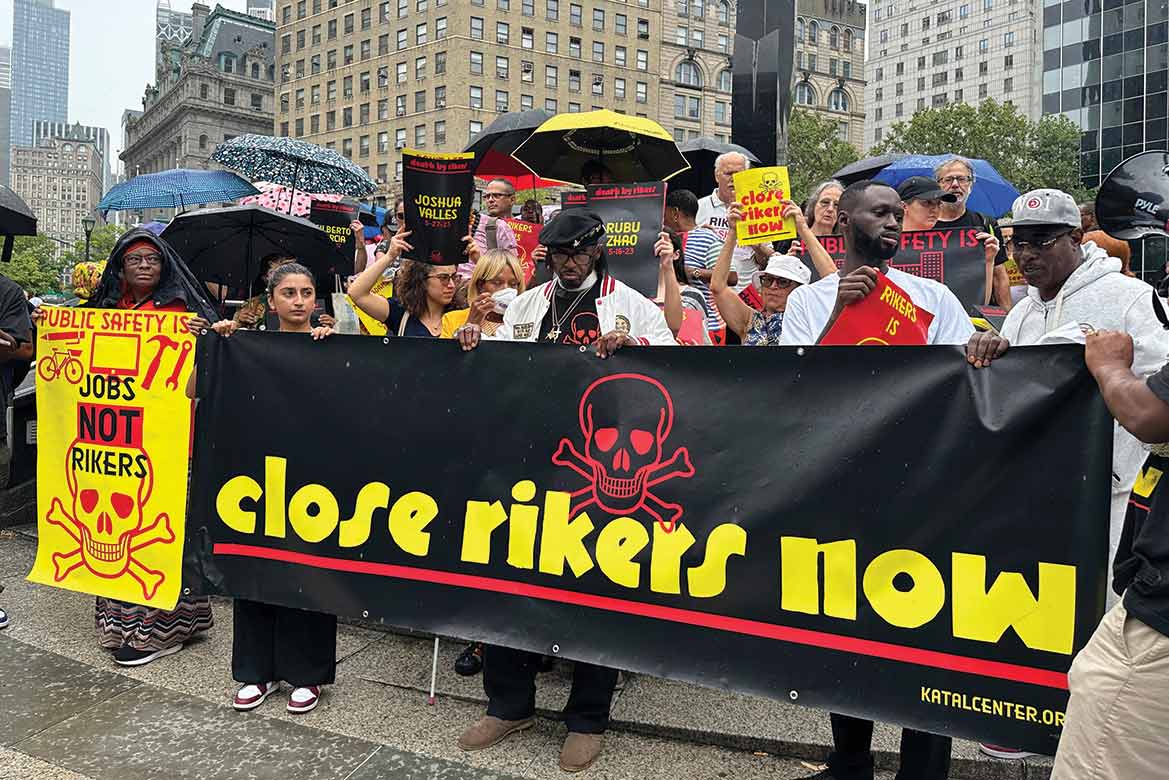
For years, I hesitated to go public with my experience. I was ashamed of the work I had done. I was also afraid of getting sued or smeared, and I didn’t want to alienate one of the most powerful companies on Earth; the nonprofit I later worked at was cofounded by a McKinsey alum and had three other McKinseyites serving as advisers or board members.
I ultimately chose to be a source for Walt Bogdanich and Mike Forsythe’s excellent book, When McKinsey Comes to Town, and to out myself as the author of an anonymous Current Affairs exposé about the company.
In June 2019, I was arrested along with 35 others for blocking traffic outside an ICE detention facility in Elizabeth, N.J., an act of civil disobedience organized by the immigrant advocacy organization Never Again Action. These days, I regularly wear an “Abolish ICE” shirt and loudly speak out against the agency. My interest in the issue is genuine—I think ICE provides no social value and mostly serves to terrorize immigrants. But deep down, I think some part of it is also motivated by guilt.
McKinsey promises its consultants that they won’t have to work for clients they disagree with. But this pushes ethical responsibility downward onto each individual, and only a tiny minority of the consultants need to be willing to do a project for it to be carried out.
What’s more, though McKinsey promotes itself as a vehicle for public service, in practice, it stacks the deck heavily in favor of power and money. I remember my staffing manager once telling me that if I wanted to serve a nonprofit client, I would have to take a 25 percent pay cut for the duration of the engagement.
McKinsey is also the most tight-lipped of the consulting firms. You’re never supposed to name your clients, not even to your romantic partner or to other members of the firm (though those rules were routinely broken). This secrecy protected me the way it protects McKinsey: I didn’t have to disclose to anyone that I worked for ICE. In fact, I couldn’t.
I now think consultants should act as if they’ll have to justify their work to friends and family. They should, at the very least, be able to justify it to themselves. Looking back, I know I can’t.
McKinsey won’t truly reform itself, because it neither needs to nor wants to. As the world’s largest private partnership, it can’t be taken over by shareholder activists. All it needs to sustain itself is its client base and its recruiting pipeline from elite universities. The past few years of critical attention have done little to affect either. In 2021, then–managing partner Kevin Sneader told the Financial Times that the firm had lost “very, very, very few clients” and just had its “best recruiting year ever.”
Even the mild reforms that Sneader implemented—some of which would have made it easier for me to object to the ICE project—faced a backlash from McKinsey’s senior partners. Though they didn’t overturn his changes, they voted him out after just one term (which hasn’t happened since 1976) and replaced him with Bob Sternfels, whose leadership represents a return to the status quo ante.
In an ideal world, McKinsey and other management consultancies wouldn’t exist, at least not in anything close to their current form. In the meantime, there are some ways to penalize a firm that has largely escaped accountability.
The first is that governments can investigate McKinsey. There are recent precedents for this. In 2020, the federal government’s procurement arm terminated a host of McKinsey contracts after its inspector general caught the firm lobbying to help it sidestep contracting regulations, and in April 2022, the Food and Drug Administration announced that it would not issue any new contracts to McKinsey pending the outcome of a congressional investigation into its relationship with the agency. That same month, Sternfels was brought before the House Oversight Committee to explain the firm’s role in helping to fuel the opioid epidemic.
In December, after ProPublica published its investigations into McKinsey’s work for the FDA and for the opioid manufacturers that the FDA regulates, Congress enacted a law attempting to limit conflicts of interest at federal contractors.
The second way to penalize McKinsey lies with the prestigious universities that the firm so obsessively recruits from. Schools could ban McKinsey from recruiting on campus or could provide dossiers to prospective candidates outlining the firm’s troubling conduct—a counterweight to the deluge of glossy pamphlets that promise you the ability to do well by doing good.
A senior partner once told a writer, “There is no institution on the planet that has more integrity than McKinsey.” But I never felt worse about my professional life—or my role in the world—than while I was there. Nonetheless, my stint at McKinsey probably improves my employment prospects overall.
My time at McKinsey led to the Current Affairs essay that launched my journalism career. It also led to the piece you are reading now. If I ever crawled back to the corporate world, McKinsey would be the credential that most validates me as a “smart, competent person” to a recruiter. Some of them would likely see it as a promising sign of my ruthlessness—always a prized asset in the pursuit of profit.
Nothing short of a full de-McKinsey-fication of society will change the fact that, no matter what damage the firm does, its brand benefits the people who work there. We will know things have improved only when the name “McKinsey” on a résumé becomes what I learned it should be: a source of shame.
Disobey authoritarians, support The Nation
Over the past year you’ve read Nation writers like Elie Mystal, Kaveh Akbar, John Nichols, Joan Walsh, Bryce Covert, Dave Zirin, Jeet Heer, Michael T. Klare, Katha Pollitt, Amy Littlefield, Gregg Gonsalves, and Sasha Abramsky take on the Trump family’s corruption, set the record straight about Robert F. Kennedy Jr.’s catastrophic Make America Healthy Again movement, survey the fallout and human cost of the DOGE wrecking ball, anticipate the Supreme Court’s dangerous antidemocratic rulings, and amplify successful tactics of resistance on the streets and in Congress.
We publish these stories because when members of our communities are being abducted, household debt is climbing, and AI data centers are causing water and electricity shortages, we have a duty as journalists to do all we can to inform the public.
In 2026, our aim is to do more than ever before—but we need your support to make that happen.
Through December 31, a generous donor will match all donations up to $75,000. That means that your contribution will be doubled, dollar for dollar. If we hit the full match, we’ll be starting 2026 with $150,000 to invest in the stories that impact real people’s lives—the kinds of stories that billionaire-owned, corporate-backed outlets aren’t covering.
With your support, our team will publish major stories that the president and his allies won’t want you to read. We’ll cover the emerging military-tech industrial complex and matters of war, peace, and surveillance, as well as the affordability crisis, hunger, housing, healthcare, the environment, attacks on reproductive rights, and much more. At the same time, we’ll imagine alternatives to Trumpian rule and uplift efforts to create a better world, here and now.
While your gift has twice the impact, I’m asking you to support The Nation with a donation today. You’ll empower the journalists, editors, and fact-checkers best equipped to hold this authoritarian administration to account.
I hope you won’t miss this moment—donate to The Nation today.
Onward,
Katrina vanden Heuvel
Editor and publisher, The Nation
More from The Nation
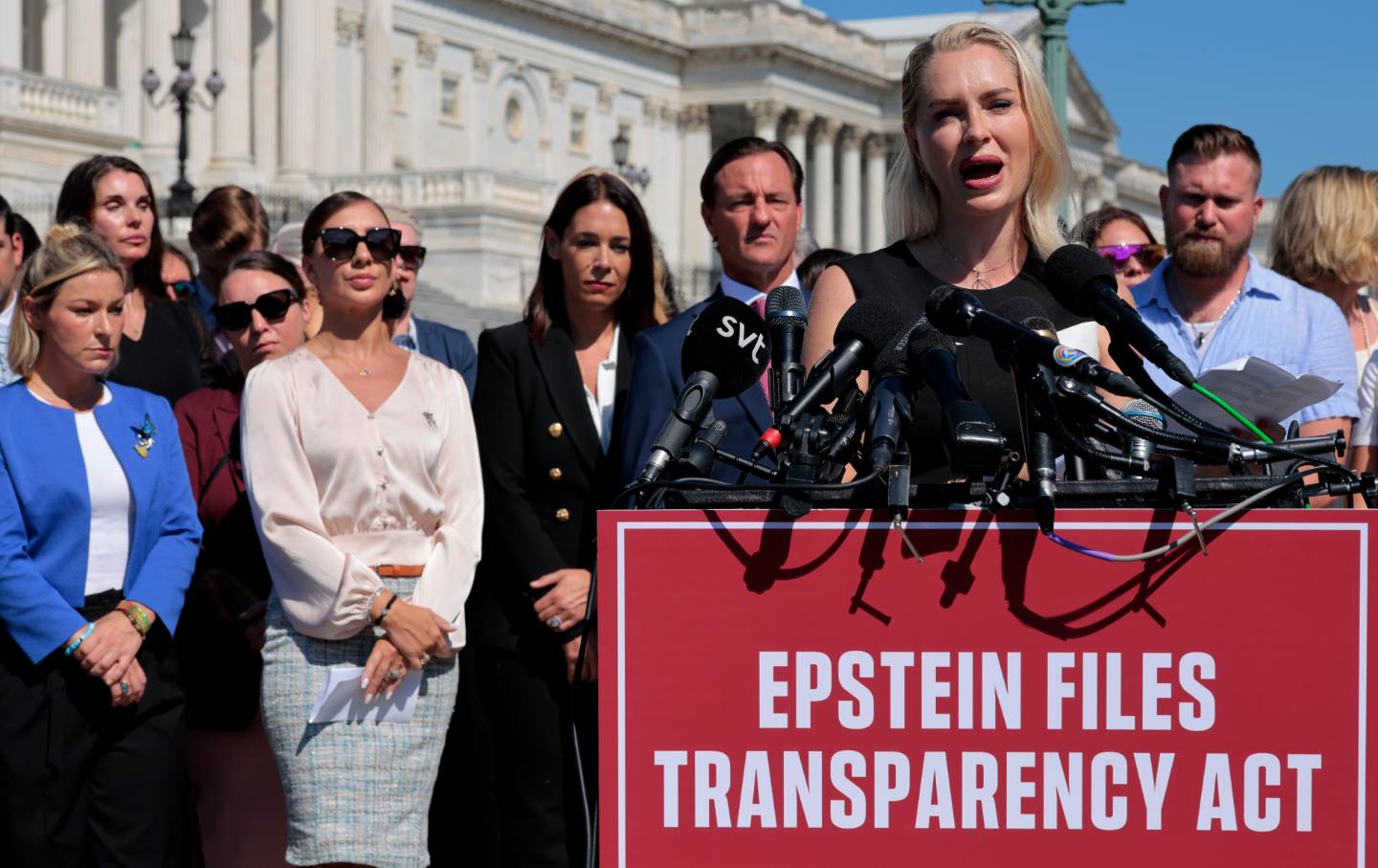
The Epstein Survivors Are Demanding Accountability Now The Epstein Survivors Are Demanding Accountability Now
The passage of the Epstein Files Transparency Act is a big step—but its champions are keeping the pressure on.
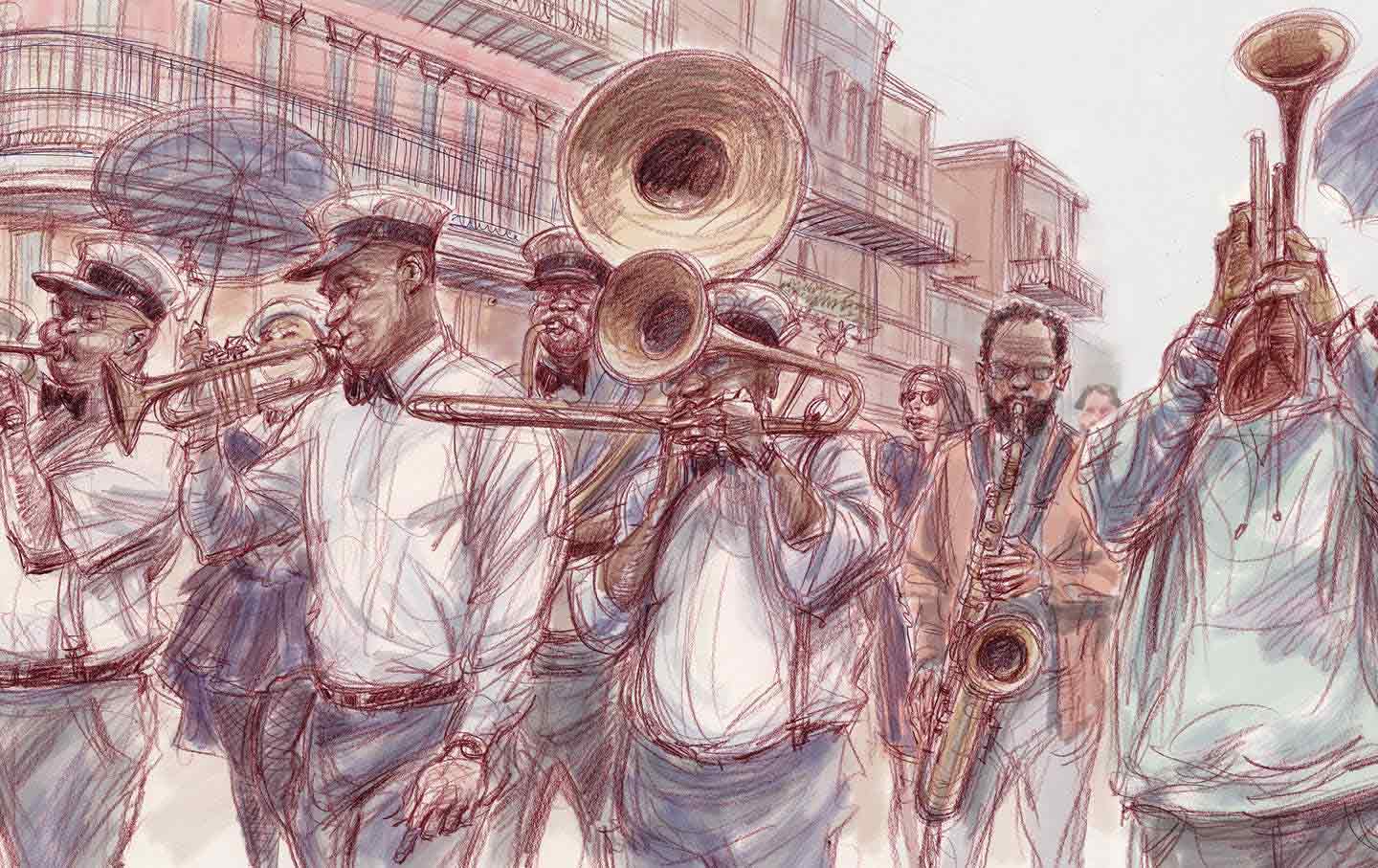
The Fight to Keep New Orleans From Becoming “Everywhere Else” The Fight to Keep New Orleans From Becoming “Everywhere Else”
Twenty years after Katrina, the cultural workers who kept New Orleans alive are demanding not to be pushed aside.

Breaking the LAPD’s Choke Hold Breaking the LAPD’s Choke Hold
How the late-20th-century battles over race and policing in Los Angeles foreshadowed the Trump era.
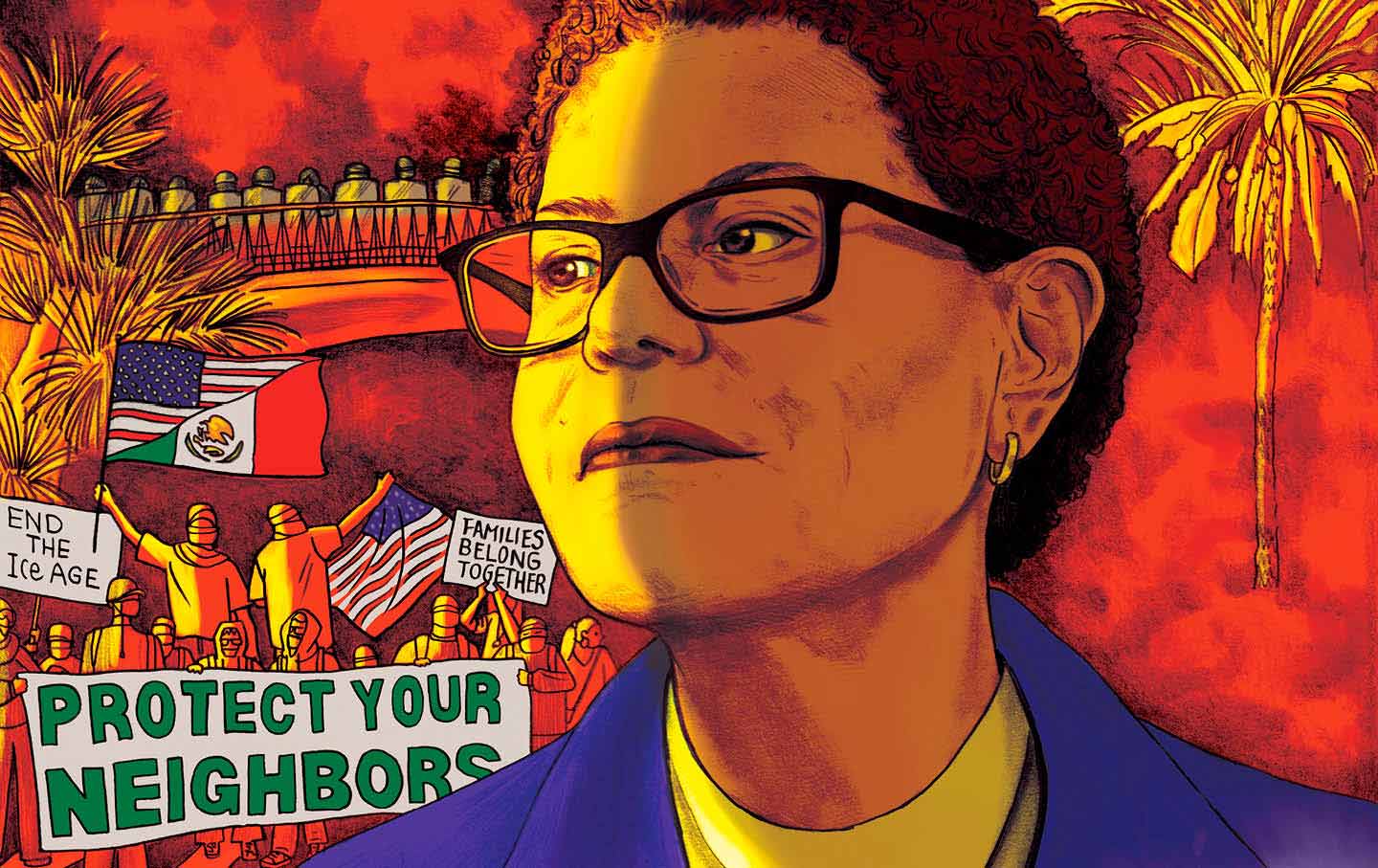
Mayor of LA to America: “Beware!” Mayor of LA to America: “Beware!”
Trump has made Los Angeles a testing ground for military intervention on our streets. Mayor Karen Bass says her city has become an example for how to fight back.
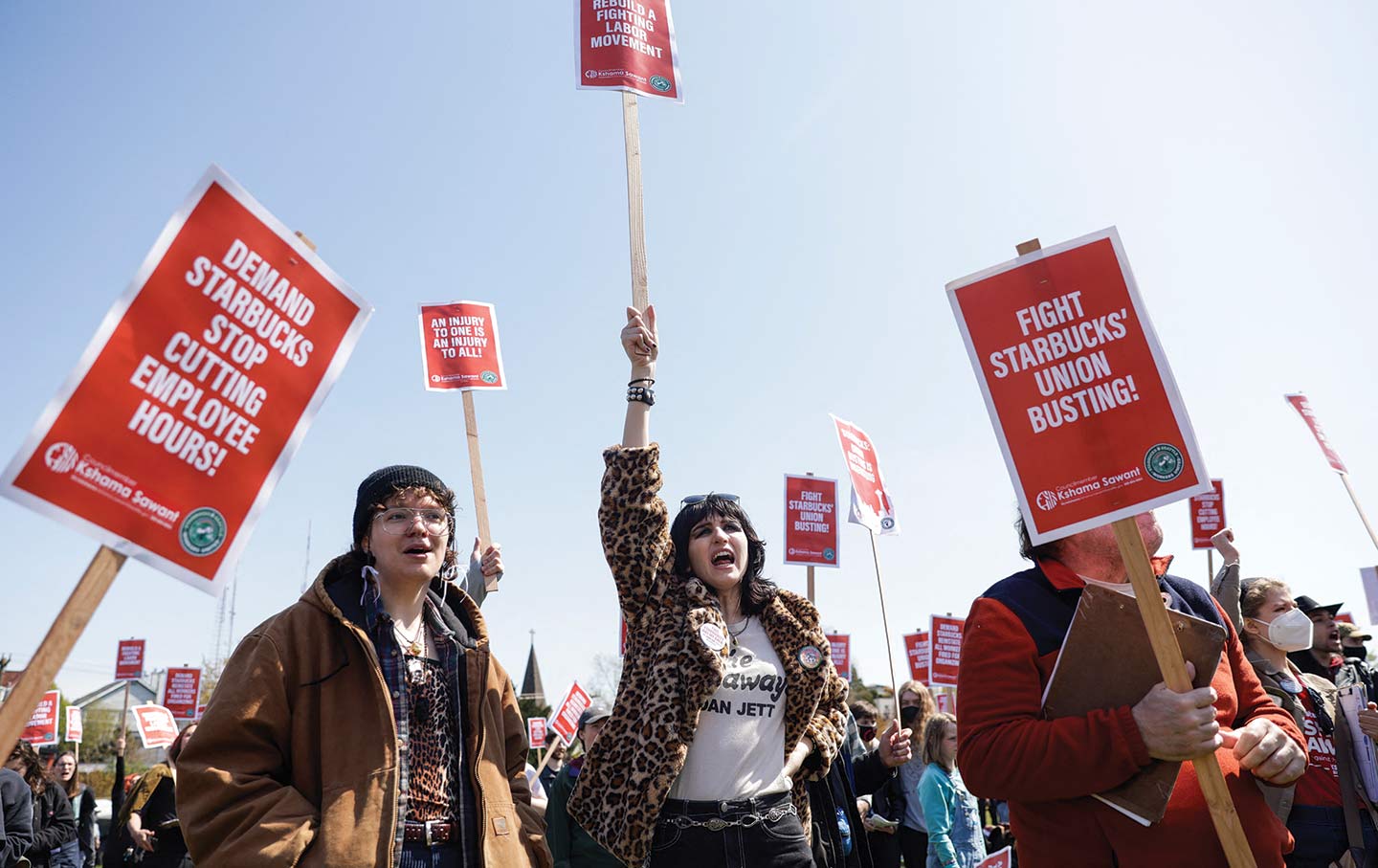
Organized Labor at a Crossroads Organized Labor at a Crossroads
How can unions adapt to a new landscape of work?
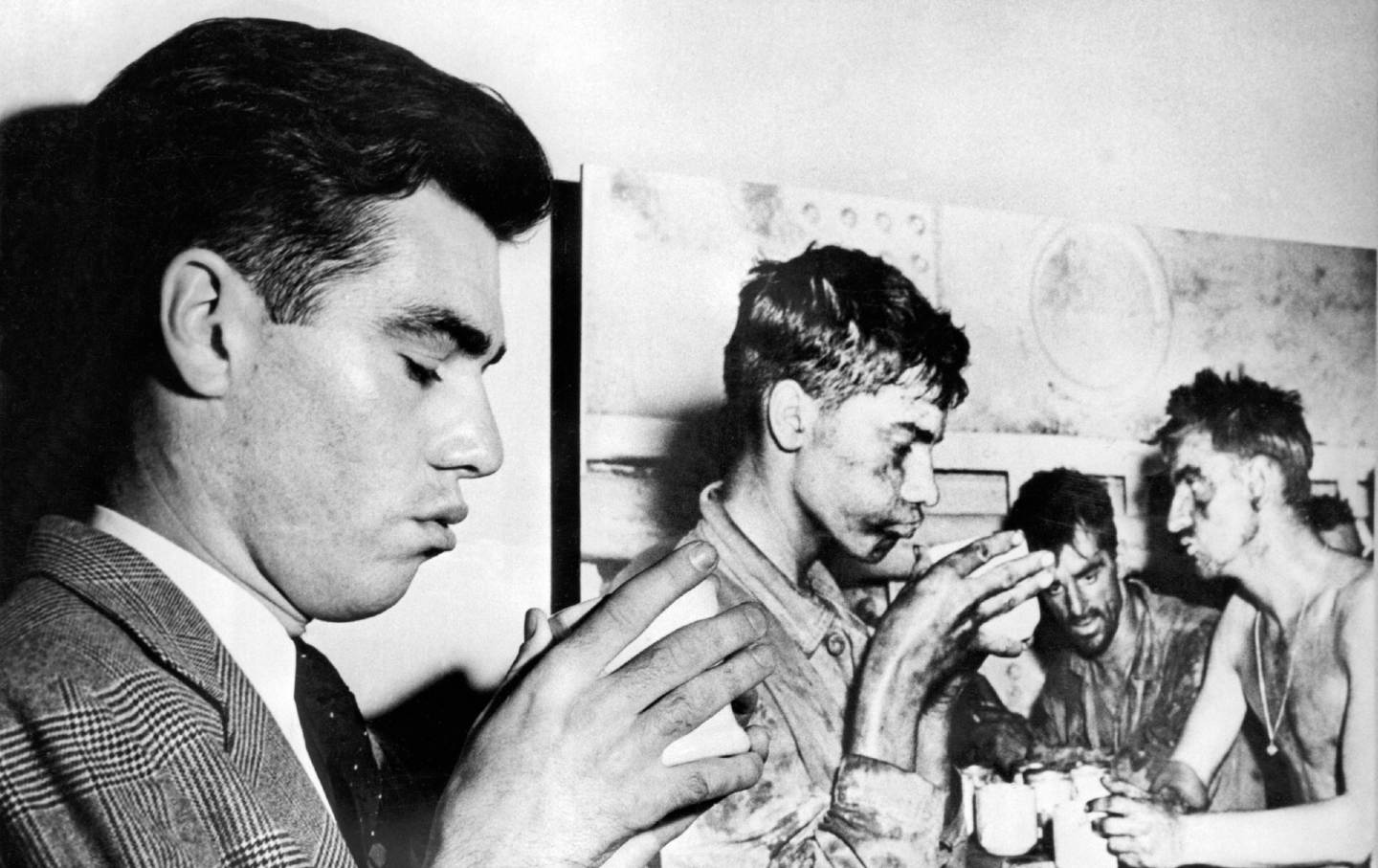
David Nasaw’s Unsparing Tour of America’s World War II and Its Aftermath David Nasaw’s Unsparing Tour of America’s World War II and Its Aftermath
A gimlet-eyed and honest accounting of the war’s hidden costs that still affect us today.


